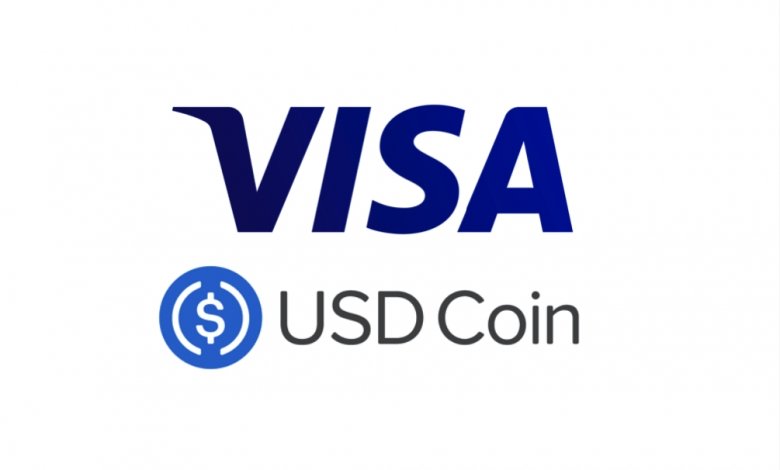What if you could pay for your coffee or groceries with cryptocurrency as easily as swiping a card? In 2025, Visa and Bridge are teaming up to make this a reality, integrating stablecoins like USDT and USDC into everyday purchases. Their partnership aims to bridge the gap between crypto and real-world spending, letting anyone use stablecoins at millions of Visa merchants worldwide. This article explores how this collaboration works, why it’s a game-changer for crypto adoption, and how you can start using stablecoins for daily expenses with ease.
What Are Stablecoins and Why Use Them for Spending?
Stablecoins are cryptocurrencies pegged to stable assets, like the U.S. dollar, keeping their value steady at around $1 each. Popular ones like Tether (USDT) and USD Coin (USDC) are widely used in crypto trading and DeFi, but Visa and Bridge want to make them as common as cash for everyday purchases. The stablecoin market hit $230 billion in 2025, showing their growing popularity.

For beginners, stablecoins are like digital dollars you can store in a crypto wallet, such as MetaMask or Phantom. They’re perfect for spending because they don’t fluctuate like Bitcoin, and they’re faster and cheaper than traditional bank transfers, especially across borders.
Why Stablecoins Beat Cash or Cards
Stablecoins offer low fees—often under $0.10 per transaction on networks like Polygon—compared to credit card fees of 2-3%. They also enable instant global payments, ideal for travelers or online shoppers. With Visa and Bridge, stablecoins become as convenient as tapping your card, but with crypto’s efficiency.
The Visa-Bridge Partnership: A Game-Changer
Visa, a global payment giant, and Bridge, a crypto infrastructure provider, announced their partnership in March 2025 to integrate stablecoins into Visa’s network of 130 million merchants. This move brings crypto to the mainstream, making it easy for anyone to spend USDT or USDC at stores, restaurants, or online.
How It Works
Bridge’s platform converts stablecoins to fiat currency in real-time at the point of sale. When you pay with USDC at a Visa merchant, Bridge instantly swaps it to dollars, and the merchant receives fiat, unaware of the crypto backend. Users link their crypto wallet to a Visa card or mobile app, enabling seamless transactions.

Fast and Secure Transactions
The partnership leverages Solana and Polygon for transactions, ensuring fees stay below $0.20 and payments clear in seconds. Bridge’s audited smart contracts and Visa’s fraud protection add security, giving users confidence to spend stablecoins without worry.
Global Reach
Visa’s network spans 200 countries, so you can use stablecoins at a café in Paris or a shop in Tokyo. Bridge’s multi-chain support (Solana, Ethereum, Polygon) ensures compatibility with popular wallets, making this a truly global solution for crypto users.
Why This Partnership Matters
The Visa-Bridge collaboration is more than a tech upgrade—it’s a step toward mass crypto adoption. Here’s why it’s a big deal for everyday people.
Simplifying Crypto for Everyone
No need to understand blockchain to use stablecoins. Visa’s familiar payment system and Bridge’s user-friendly wallet integration mean anyone with a smartphone can start spending crypto. Tutorials on Bridge’s website guide beginners through setup in minutes.

Boosting Stablecoin Adoption
With 65% of Visa merchants testing stablecoin payments in Q1 2025, adoption is soaring. The partnership has processed $500 million in stablecoin transactions already, a 200% jump from 2024. This growth signals merchants and consumers are ready for crypto payments.
Competing with Traditional Finance
Stablecoins challenge high bank fees and slow cross-border transfers. By offering near-zero fees and instant settlements, Visa and Bridge make crypto a practical alternative to cards and wire transfers, especially in emerging markets.
Challenges and Solutions
Bringing stablecoins to daily spending isn’t without hurdles, but Visa and Bridge are tackling them head-on.
Regulatory Uncertainty
Crypto regulations vary globally, complicating adoption. Visa and Bridge comply with KYC and AML rules, working with regulators like the SEC and FCA to ensure legality. Lesson: choose platforms with strong compliance for safety.
Merchant Onboarding
Not all merchants are crypto-savvy. Bridge offers plug-and-play APIs, so businesses can accept stablecoins without understanding blockchain. Visa’s training programs help merchants adapt, with 20% more joining monthly.
User Education
Crypto wallets can intimidate newcomers. Bridge’s app includes step-by-step guides, and Visa’s support team assists via chat. Lesson: opt for platforms that prioritize user-friendly resources.
The Future of Stablecoin Spending
The Visa-Bridge partnership is just the start. By 2026, they aim to process $5 billion in stablecoin transactions annually, with plans to add more stablecoins like DAI and support for Ethereum’s layer-2 networks. Their 10% mindshare on X reflects growing buzz, with users praising the ease of crypto spending.

As stablecoins become as common as debit cards, this partnership could redefine how we pay, blending crypto’s speed with Visa’s global reach. For consumers, it’s a chance to save on fees and embrace the future of finance.
Your Path to Stablecoin Spending
Visa and Bridge are making stablecoins a practical choice for daily purchases, from groceries to online shopping. Start by setting up a wallet like Phantom, buying USDT or USDC on exchanges like Coinbase, and linking it to Visa’s payment app. With low fees and global access, you can spend crypto anywhere Visa is accepted. Join the revolution and make your wallet work smarter.
Ready to spend stablecoins? Visit Bridge’s website, connect your wallet, and start using crypto for everyday purchases today.




